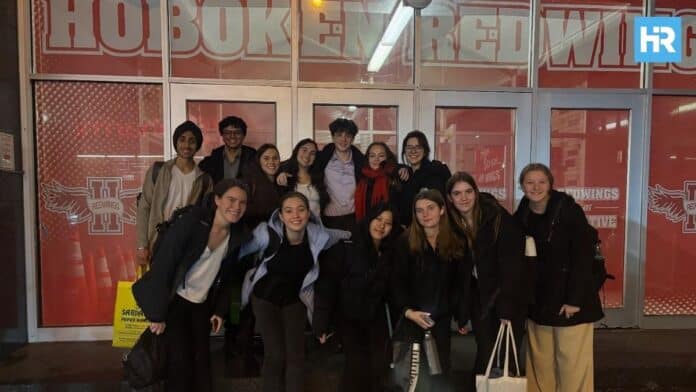The New York Yankees are a paradox.
They build, break, rebuild, and somehow, the machine keeps moving.
However, this time, something feels different.
There’s a growing sense of uncertainty in the outfield, a brewing storm around a name that most didn’t expect to be part of the Major League conversation yet—Spencer Jones.
Now, we find ourselves at the edge of a scenario that may be inevitable, risky, and daring all at once.
- With stellar spring training, Jones could earn a surprise Major League call-up as Stanton recovers.
- Giancarlo Stanton’s elbow issues force the Yankees to explore alternative options, including a potential trade for the Mets’ Starling Marte.
- The arrival of Paul Goldschmidt, Cody Bellinger, Max Fried, and others strengthens the Yankees’ roster in pursuit of another World Series run.
The Stanton-sized Hole in the Yankees’ Universe
First, let’s address the central issue at hand.
Giancarlo Stanton, one of the highest-paid MLB players, is injured once again.
This time, the problem is both elbows.
The exact severity remains unclear because the Yankees, as is often the case, are keeping details close to the vest.
Manager Aaron Boone’s update that Stanton “hasn’t started baseball activities yet” translates to a manager’s version of saying, “We don’t have a firm timeline and we’re not ready to sound the alarm, but we don’t have good news either.”
Naturally, this lack of clarity has everyone on edge.
Stanton’s absence isn’t merely about losing a single bat in the lineup.
This is about a lineup that revolves around his power, and his potential unavailability at the start of the season leaves a glaring hole.
Stanton was a postseason hero in 2024, crushing seven home runs, including four in the ALCS, to push the Yankees into the World Series.
Even in a regular season that saw his batting average dip to .233, his 27 home runs and 72 RBIs still made him one of the team’s most reliable run-producers.
Now, with no clear return date, the Yankees find themselves in a precarious position––the kind of scenario that forces a front office to make tough choices.
Do you count on his recovery and do nothing? Do you explore trades and free-agent options? Or do you hedge your bets by testing an unproven prospect?
Right now, the Yankees appear to be weighing all of those options simultaneously.
The Spencer Jones Conundrum
Then there’s Spencer Jones, the 6-foot-6 outfielder whose raw talent and frustrating inconsistency have made him both an exciting prospect and a potential liability.
The Yankees drafted Jones with the No. 25 pick in 2022, and since then, he’s become something of a high-risk, high-reward project.
His statistics paint a picture of immense promise and a fair amount of uncertainty.
Over the past two seasons, Jones has hit 33 home runs, stolen 68 bases, and drawn plenty of attention for his towering home runs.
On the other hand, he’s also been plagued by a sky-high strikeout rate, racking up 200 strikeouts in 2024 alone.
Then came a pivotal moment during spring training at TD Ballpark.
In a game that was already unusual because of the Yankees testing MLB’s new Automated Ball-Strike (ABS) system, Jones stepped into the spotlight.
After Everson Pereira successfully challenged a strike call on a 3-2 pitch, Jones made the most of his opportunity.
On the very next pitch, he launched a two-run homer over the left field wall––a thunderous swing that seemed to confirm everything the Yankees had hoped he could be.
But the question remains: is that one moment enough to justify giving him a shot at the Major League level?
Jones hasn’t even played in Triple-A yet, and the Yankees already have plenty of outfielders.
Still, with Stanton’s status in limbo, the calls to promote Jones are growing louder by the day.
The Yankees must now decide if they’re ready to see what this young talent can do on the big stage.
The Trade That Might Happen and the One That Should
The Yankees’ decision-making process doesn’t stop with Jones.
Another name being floated in trade rumors is Starling Marte, the Mets outfielder who could fill the void left by Stanton if the Yankees choose to pursue him.
The Mets, fresh off signing Juan Soto to a 15-year contract, are looking to shed salary and make room in their outfield.
Marte, a 36-year-old veteran with a final-year salary of $20.75 million, fits the bill.
His .269 average, 7 home runs, and 40 RBIs in 2024 aren’t jaw-dropping, but they reflect a player who can still contribute at a steady pace.
More importantly, Marte’s defense and experience would give the Yankees a reliable option while Stanton heals.
The rumored deal would send two Yankees prospects to the Mets.
Facundo, a 22-year-old lefty pitcher with a 2.40 ERA in Single-A, and Flores, a 24-year-old catcher/first baseman who hit .279 with 21 home runs and 68 RBIs in A+ and AA, are the pieces reportedly on the table.
While neither is considered a top-tier prospect, both are promising young players who would provide depth to the Mets’ farm system.
The Yankees would benefit from Marte’s presence, but the front office must carefully consider the cost of parting with these prospects, even for a one-year rental.
In addition, they’re reportedly asking the Mets to cover part of Marte’s salary, further complicating negotiations.
If the trade goes through, Marte will likely play right field, letting Cody Bellinger remain in the center.
The move would stabilize the Yankees in the outfield until Stanton returns.
But it also underscores how complicated their roster decisions have become in light of these injuries and uncertainties.
The Yankees’ War Between The Future and The Now
This is where the Yankees find themselves in 2025: torn between long-term development and immediate success.
They suffered a major blow by losing Juan Soto, but their offseason wasn’t a retreat but a calculated attempt to keep the championship window open.
They brought in Paul Goldschmidt, the 37-year-old 2022 NL MVP, to add veteran leadership and a steady bat.
While his best days may be behind him, Goldschmidt’s reputation for professionalism and clutch performances makes him a valuable addition.
They acquired Cody Bellinger, whose left-handed power and Gold Glove-caliber defense seem tailor-made for Yankee Stadium.
If Bellinger can find consistency again, he could be one of the team’s most impactful signings.
Max Fried, a postseason-tested pitcher, was brought in to stabilize the rotation.
Despite some ups and downs in October, Fried’s talent and experience make him a key piece for the Yankees’ pursuit of another World Series run.
Devin Williams, one of the best closers in baseball, now anchors the Yankees’ bullpen.
His presence should help them lock down close games, something that was a struggle at times last season.
All these moves have kept the Yankees in the title conversation, but the cracks are already showing.
How they respond to those cracks now will determine whether they fulfill their championship aspirations or fall short once again.
















